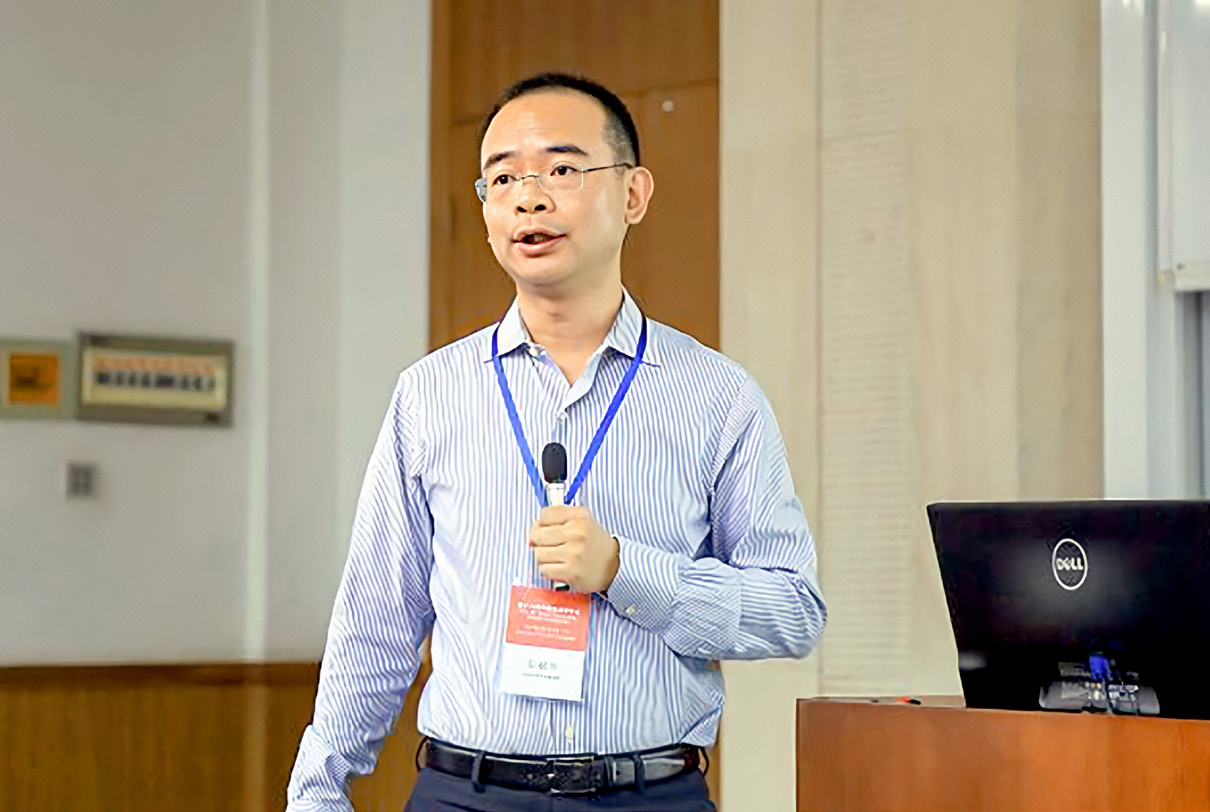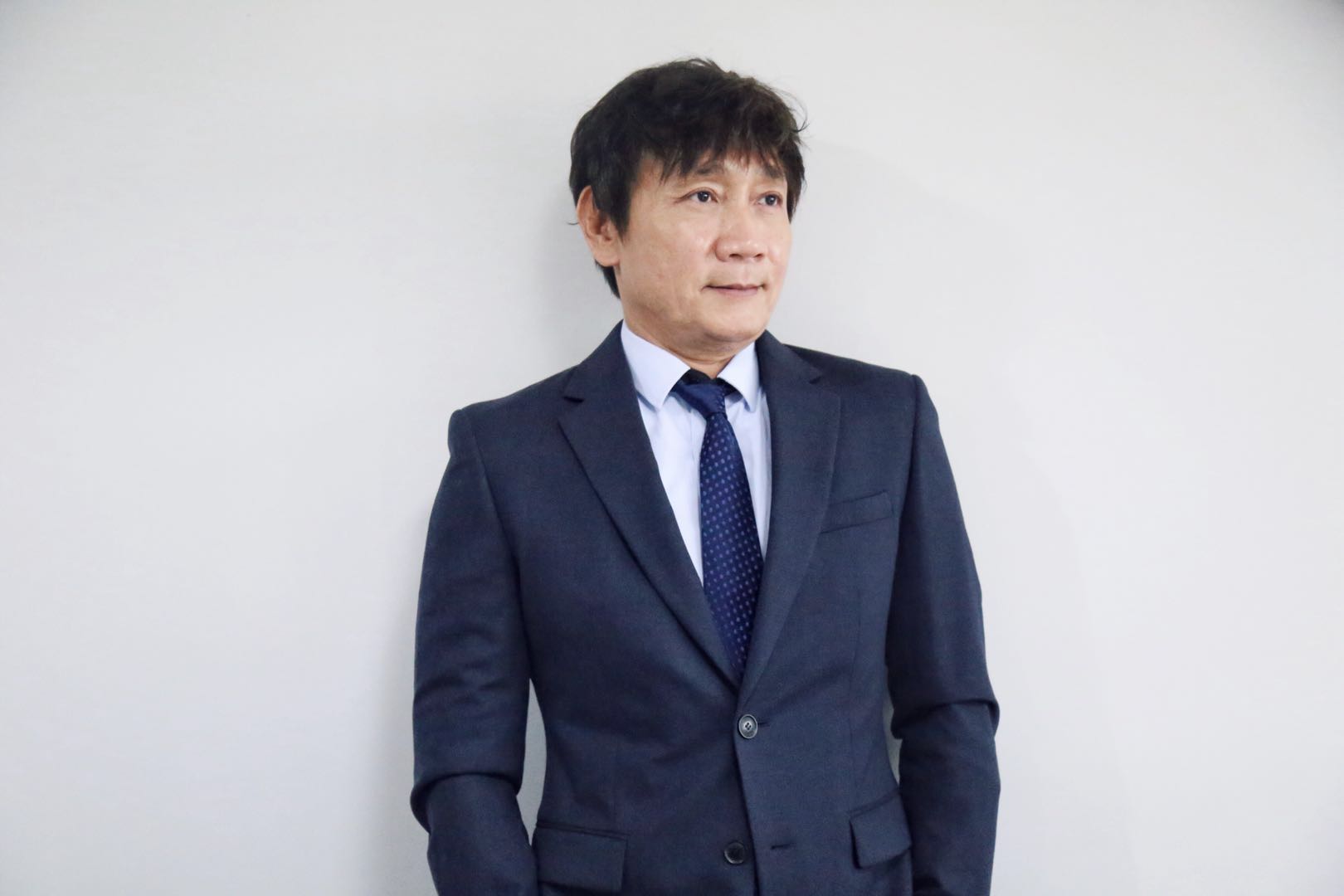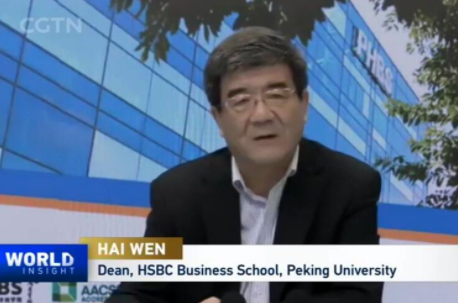Without referring to any notes, Professor Peng Xianhua clearly wrote every step of a complex mathematical proof of a theorem on the board in his math class.
“If he did not come up with these derivations on the spot, he must have an amazing ability to recite them before preparing the lectures,” said Chen Yongqiao, one of Peng’s math students.
Gentle, modest, earnest, and highly logical are words Peng’s students choose to describe him. An associate professor at PHBS, Peng earned his bachelor’s degree in mathematics from Peking University and a Ph.D. in operations research at Columbia University. He has published many academic papers in well-known international journals on hot issues including asset pricing, derivative pricing, risk management, and financial regulation. Among his research, Peng is particularly interested in risk measurement in economics.
“If there were one thing people need to learn in finance after COVID-19, it may be the importance of managing tail risk (the financial risk of an asset or portfolio of assets losing a high proportion of its value which rarely happens). Tail risk events occur more often than people expect,” said Peng. He took many years to study how to better measure financial tail risk for solving real-world problems.
Falling in Love with Mathematics
Peng is enamored of using mathematical tools to deal with vagueness and uncertainty.
"Prediction is very difficult, especially if it's about the future,” said Niels Bohr, the 1922 Nobel Prize laureate in physics. The same is true for predicting tail risk measurement. According to Investopedia, economic tail risk is the chance of a loss occurring due to a rare event. Peng and his co-authors proposed new measures of tail risk in their paper “On the Measurement of Economic Tail Risk,” to make the prediction more accurate.
How to make use of mathematical tools to solve practical problems, especially in the financial field, is the question he thinks of day and night. Peng has been interested in mathematics since he was young. He participated in national mathematics competitions starting in middle school and won many prizes. Then in 1996 at the School of Mathematics, Peking University, he began to study such subjects as abstract algebra, real analysis, complex analysis, topology, functional analysis, probability theory. From undergraduate to graduate, he spent seven years diving into a sea of formulas and symbols that might have scared off others.
Peng earned his doctorate in operations research in 2009 from Columbia. “Operations research is closely related to management science and economics, and can be used to solve important problems in economics," said Peng. “For example, the John von Neumann Prize, the highest academic award in operations research, has been awarded since 1975, and eight of its winners have since been awarded the Nobel Prize in economics, including John Nash."
When Peng studied at Columbia, financial engineering was booming. As the school is located in New York City, an international financial center, financial engineering research was among the best in the United States. After careful consideration, Peng chose financial engineering as his specific research field.
What is a good risk measurement? This is the question that kept Peng wondering.
Since the 1990s, the main indicator to measure market risk has been value-at-risk (VaR). Although the measurement is simple and easy to calculate, the value of VaR only shows the maximum loss under a given probability. However, it does not indicate the average value of the loss when the tail event that the actual loss exceeds the value of VaR occurs.
In order to make up for the defect of VaR, Peng suggested using Median Shortfall(MS) rather than Expected Shortfall (ES), to measure economic tail risk. Compared to ES, MS is robust and elicitable, which means there exists a scoring function that can be used for comparing the prediction accuracy of different models for predicting the risk measurement.
Although this method was not officially adopted by Basel III agreement (a global, regulatory framework on bank capital adequacy), the research was published in top academic journals and attracted scholars’ attention in the field.In addition to risk measurement, Peng also made his mark in credit derivatives pricing. His "Peng-Kou" model is used by investment banks for the pricing and risk management of credit products such as credit default swaps and options.
Show the Beauty of Mathematics in Class
Peng likes sharing ideas behind theories. When explaining a theorem or method, he summarizes the key and difficult points first and then explains the intuition of mathematics so that his students can understand how to start with a mathematical problem.
"The ideas behind math often have something in common," remarked Peng. He believes that only by asking more in-depth questions can one find the essence of the problems and solve them. “In Professor Peng’s class, math questions have become a kind of logical art, which is very pleasant," said He Hemin, a PhD student.
Designed by Professor Thomas Sargent, 2011 Nobel laureate in economics, the PHBS Doctoral Program in Quantitative Economics emphasizes mathematical training by setting up three compulsory math PhD courses. Peng teaches all three courses, aiming to help students build a solid math foundation.
“His logic is very clear, and the derivation process in class is clean and easy to understand,” said PhD student Zhang Yueqi, who worked as Peng’s teaching assistant. “I can feel how much effort Professor Peng has put in so that we can learn more than we expected in his class.”
Peng’s precise logic is also reflected in details. In his math class, it’s not uncommon that he corrects errors in math textbooks. For example, in order to make the implicit function theorem and the maximum theorem clearer, he would teach more
Use Math to Solve Complex Real-World Problems
As early 20th century math prodigy John von Neumann said, “At a great distance from its empirical source, or after much ‘abstract’ inbreeding, a mathematical subject is in danger of degeneration.” Peng largely agrees with the viewpoint, but he also believes that mathematics is generally connected to the real world, if not now, then in the future.
“For example, number theory, which seems to have nothing to do with reality, can actually be applied to cryptography,” Peng said. “In addition, in the process of solving some seemingly pure math problems, we may develop some new methods, which may help to solve other problems in reality.”
Peng believes that one can never use mathematics too much to solve real problems. “If you want to know whether math is useful in finance, you can find out by looking at Renaissance Technology,” said Peng, explaining that the company is a hedge fund based on purely quantitative investment models. “The company’s medallion fund achieved an average annualized return of about 39% from 1988 to 2018, while Warren Buffett's average annualized return was about 21% from 1965 to 2018.”
In many cases, reality is too complex to be truthfully described by math models, so scholars have to use much simpler models. Peng explained, "Some complex models may not be solvable even by mathematicians, so they have to be simplified, which results in the simplified model being far from the reality, and hence the model does not perform well in reality. This leads to the misconception that mathematics is useless."
However, Peng would not overemphasize the importance of mathematics. Instead he recommends analyzing problems on a case-by-case basis. “If the question itself requires a quantitative answer, it is helpful to use mathematical models and tools. Otherwise, qualitative research is enough,” said Peng.
Peng presents his paper at the 18th China Economics
"The greatest pleasure of academia is the freedom to study whatever we are interested in and to keep learning cutting-edge knowledge," said Peng. He spends a lot of time every day reading papers, doing math derivations and writing C++ and Python code. He continues to probe research problems such as stochastic dynamic programming algorithms, reinforcement learning algorithms, algorithmic trading, market microstructure, financial derivatives, and financial regulation.
“Thinking about how to use mathematical language and tools to find solutions to these real-world financial problems is one thing I’d love to do my whole life,” said Peng.
By Ding Ning
From PHBS Magazine ( Fall 2020 )
















